|
Glass telegraph insulators that are unique in their own way.
First off we'll start with a very rare type of Brookfield called an O'Brien's patent.Looks alot like
a gingerbread man and is VERY delicate!The arms were very easily destroyed and finding one without arm damage is nigh unto
impossible.Not only are these exceptionally rare,but when you DO find one,the owner is usually unwilling to sell it.
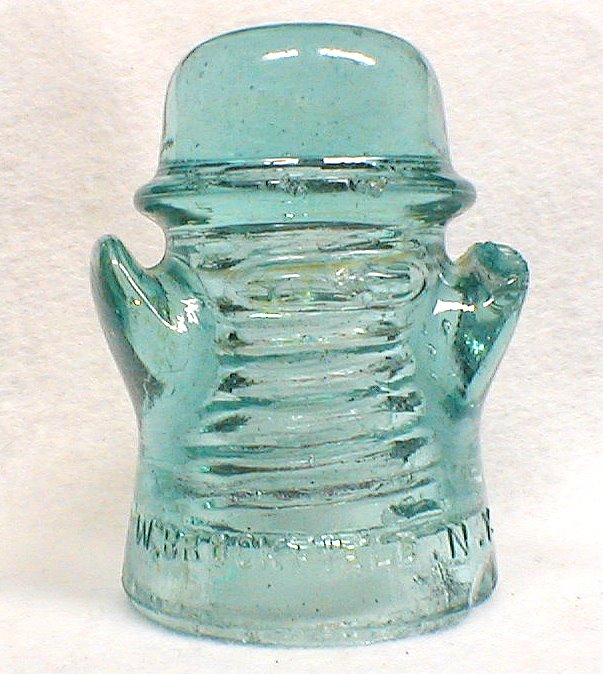
Very cool Brookfield pony in this picture.This is a very common,light aqua type but it has
been completely encased in a tree!The insulator is not broken in any way as the tree slowly grew around it.Finding these tree
engulfed insulators is a rare feat.
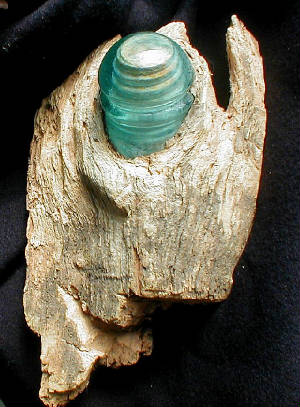
How is this for ultimate cool?This is a CD113 Hemingray 12 that was completely encased
in choke cherry heartwood and was discovered when the tree was cut for firewood and split.Fortunately,the insulator created
a weak "faultline" in the wood and it split along that weakness rather than breaking the insulator.Only by splitting the wood
was this discovered.
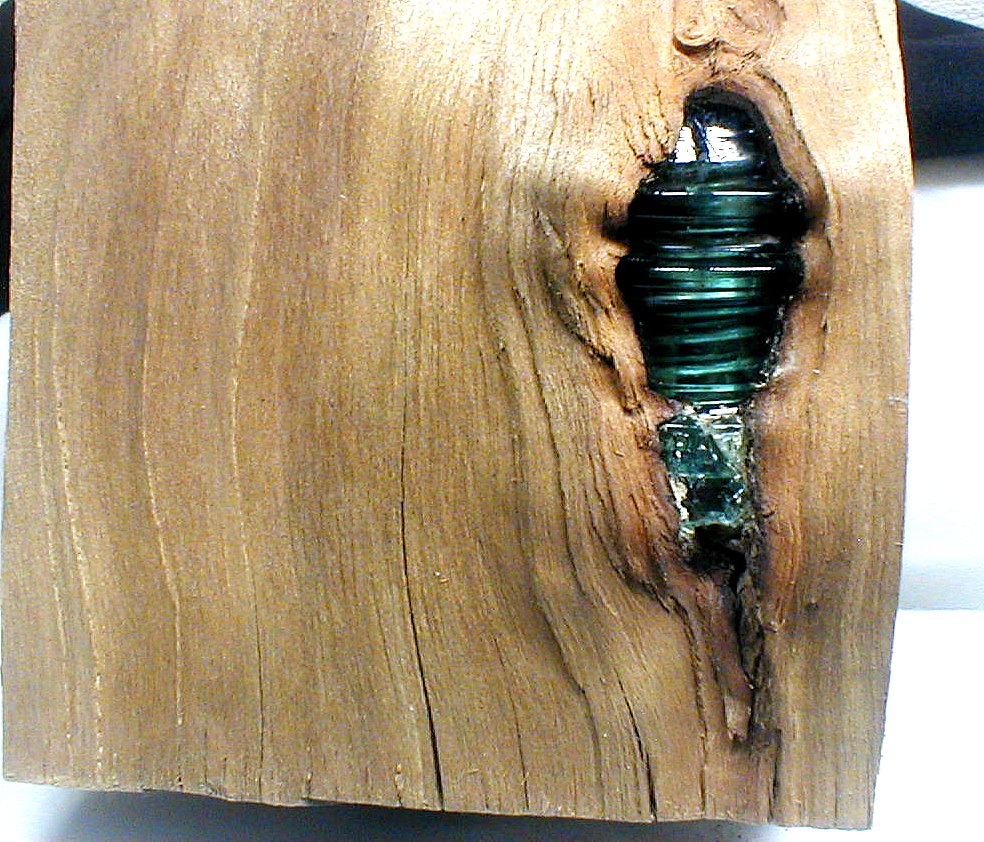
This is the bottom crosscut view.In this picture you can see how the tree actually grew fast
enough to engulf the pin and insulator rather than just break the pin and slough it off the trunk like an old snake skin.The
annular rings or growth rings are fairly wide on this tree indicating that it grew in a spot that was ideal for rapid growth.

New production insulators are SO sterile and plain,once in awhile you'll find one with a
nice colour to the glass.This one on the otherhand not only is a nice dark smokey olive green but also has a black
index fingernail sized slag rock in the fat lower wiregroove lip.These junk in glass new production pieces are extremely rare
because glass pouring and production technology was so advanced and quality control was so strict.It is highly doubtful that
there is another piece like this in existance.
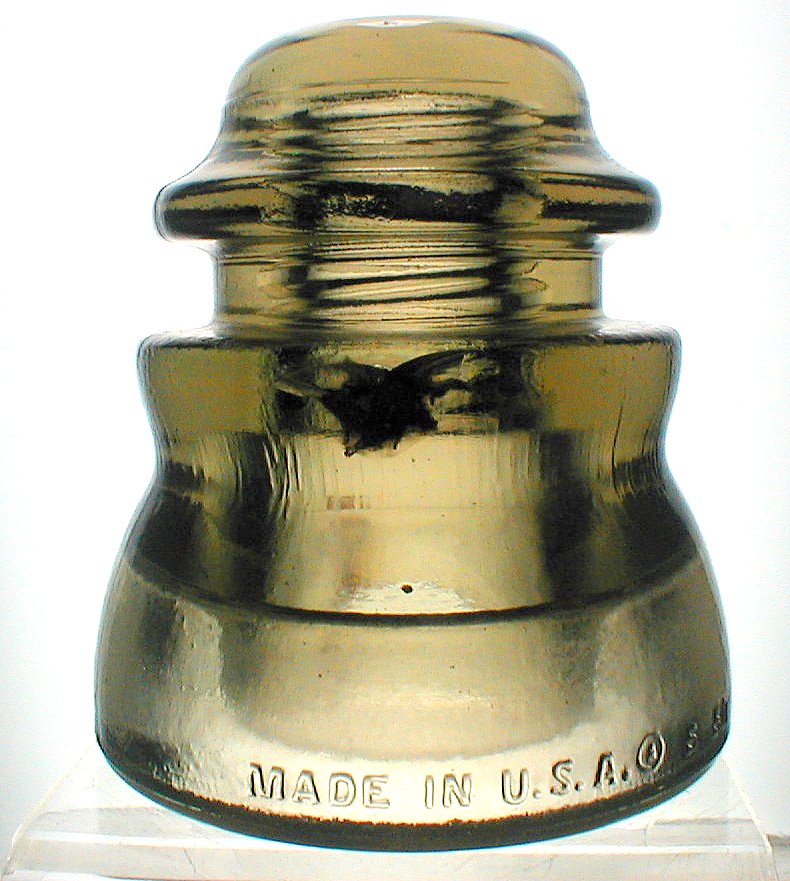
Below is an exceptionally rare CD 154 Whitall Tatum.Everyone knows that there are very few
WT's that are classified as "scarce" or "rare",but this is one of the elite few.Dark red amber in the 154 style was a very
short and limited production.I think that these were intended as an experimental colour but a few slipped out.This one had
actually seen service and had light wire marks in the wire groove trough. I had this rare insulator in my hands
for only 1 day and then it was sold.
Please note that this photograph is copyrighted by Poletop Discoveries and may not be copied
without permission from Ray Klingensmith,owner of PTD.

Same red amber WT on it's side backlighted to show it's killer red amber colouration.Do I
have regrets selling this piece?Yes I do,but when you have a 1 year old and a 4 year old,what can you do?Maybe I'll find another
one sometime....
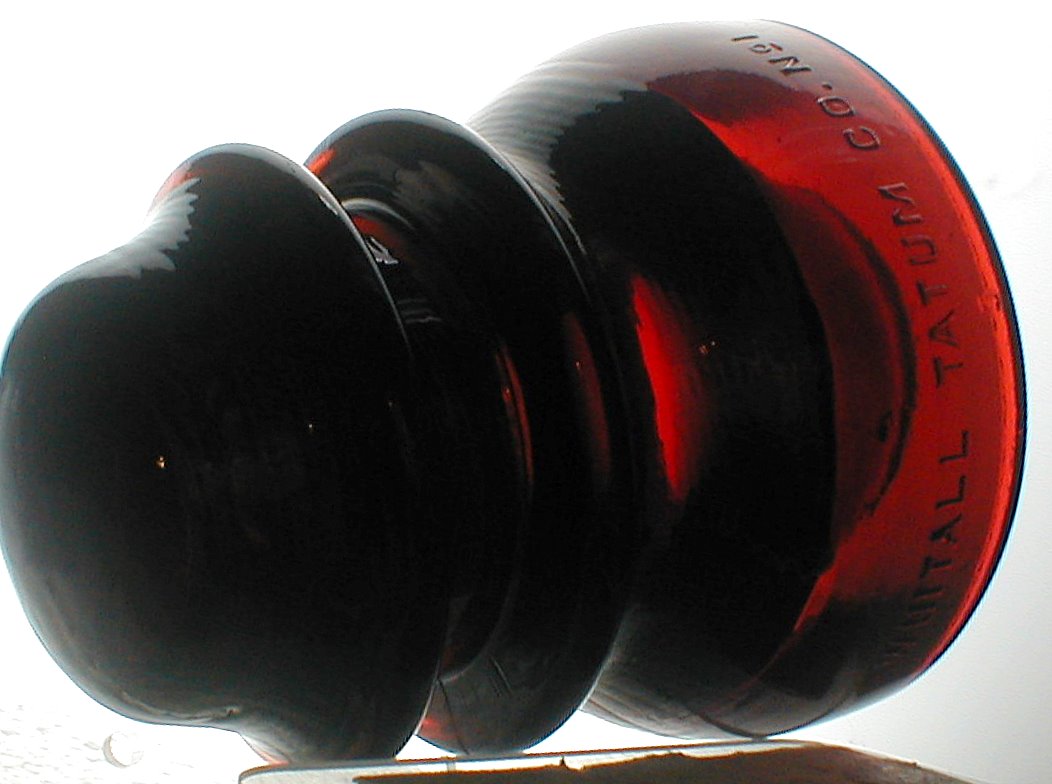
The insulator below is extremely unique in the fact that when it was made,the glassworker placed
a 1911 penny in the mould at dometop and then poured the insulator leaving a perfect reverse impression of the penny including
wording and date.Insulators with coins inside them or coin impressions anywhere in the glass are extremely rare and are highly
sought after.This specific insulator was found along an Indiana railway in the 1970's,so despite it's rare characteristic,it
saw service.
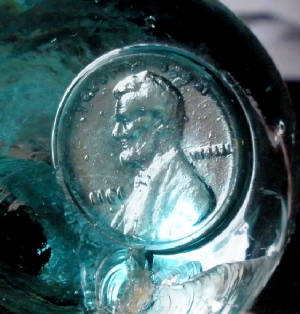
This beautiful insulator is a rare CD701 threadless egg in a dark teal blue.These are "commonly"
found in olive and green blackglass with teal and other colours being rather rare.In regards to being commonly found in blackglass,these
are in no way a commonly found insulator,it's just that most of the ones that ARE found are the olive blackglass.

When it comes to insulators that are extremely unique,this is definately one of the top ten!This
WGM Co Denver piece is a tri tone of purple fading to a reddish berry colour,finally finishing off as peach.I have never seen
one quite like this one before.This insulator turned this way because of metallic elements in the glass added to keep it clear.The
UV rays of the sun are what caused this effect.
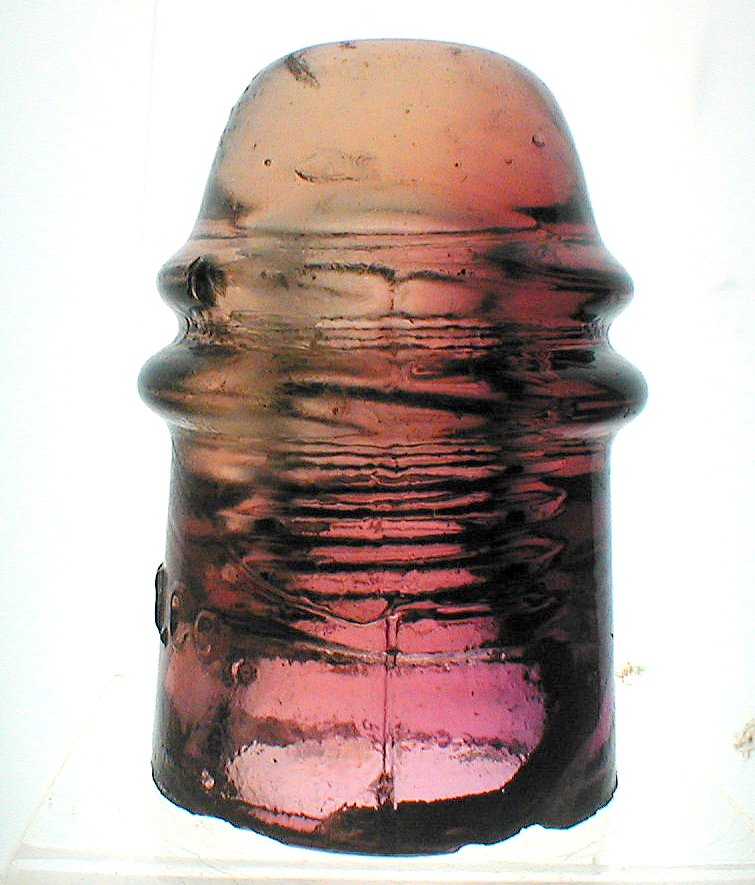
Below is another exceptionally rare threadless telegraph insulator.CD 700 "egg" insulator in
a light purple with pink undertones.This photo was taken in normal flourescent light so the pink really doesn't show as it
will in daylight.These eggs are very rare and the purple pinks are rarely available to buy.These were called "eggs" because
of their distinctive shape.
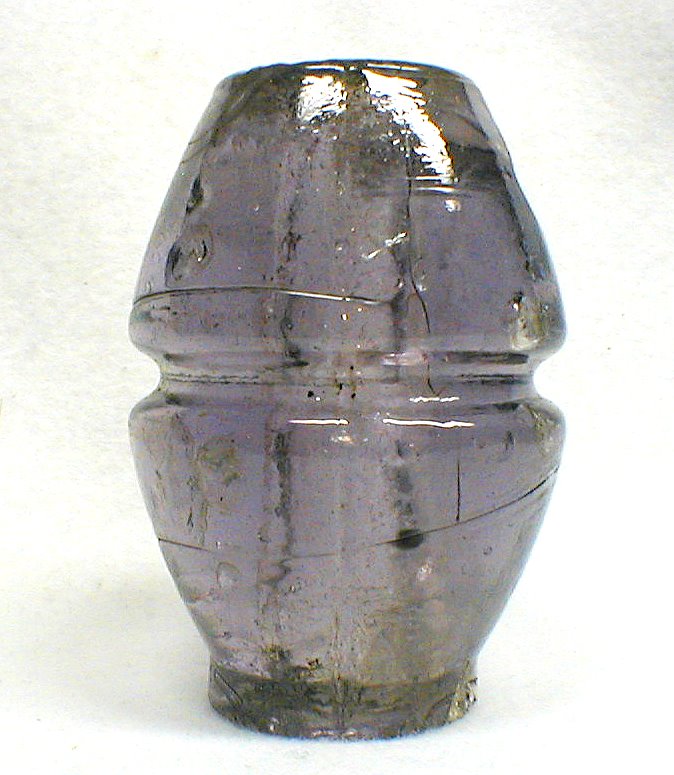
|

